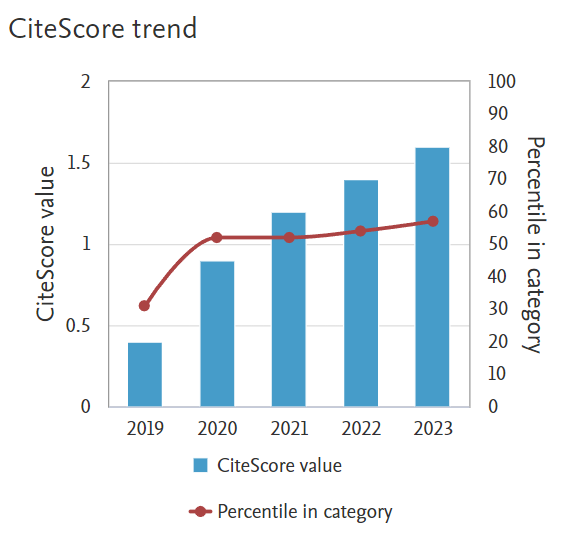Asimilación ocupacional y salarial de los inmigrantes en el mercado laboral español
DOI:
https://doi.org/10.65598/rps.5832Palabras clave:
inmigrantes, desigualdad, movilidad ocupacional, asimilación salarialResumen
La integración y asimilación de los inmigrantes es un proceso complejo que puede aumentar la desigualdad de no aplicarse las medidas adecuadas. Este trabajo se centra en España, un país sin fuerte tradición migratoria que ha recibido grandes flujos en un corto período. Examina la inserción laboral, movilidad ocupacional y asimilación salarial de los inmigrantes desde una perspectiva de género, cubriendo un periodo de 15 años. Este amplio período permite entender este proceso, al poder los inmigrantes adquirir suficiente experiencia laboral. Además, comprueba si los países de recepción más recientes reproducen patrones similares a aquellos con larga trayectoria migratoria. Usando la Muestra Continua de Vidas Laborales, se construyen tablas de movilidad para estudiar la movilidad absoluta y relativa. También se analiza la ratio entre las bases de cotización de inmigrantes y nativos a lo largo del periodo para estudiar la asimilación salarial. La investigación concluye que los inmigrantes ocupan los puestos más bajos de la escala ocupacional y sufren una brecha salarial, que es mayor entre los hombres. El mercado laboral segmentado además limita las oportunidades de los inmigrantes de ascender profesional y salarialmente. Contrariamente a lo esperado, aunque la brecha salarial se reduce lentamente, ésta persiste en el tiempo.
Descargas
Citas
Adsera, A., & Chiswick, B.R. (2007). Are there gender and country of origin differences in immigrant labor market outcomes across European destinations? Journal of Population Economics 20, 495–526. https://doi.org/10.1007/s00148-006-0082-y
Aleksynska, M., & Algan, Y. (2010). Assimilation and Integration of Immigrants in Europe. Discussion Paper No. 5185. IZA - Institute of Labor Economics. https://docs.iza.org/dp5185.pdf
Ahonen, E.Q., Porthé, V., Vázquez, M.L., García, A.M., López-Jacob, M.J., Ruiz-Frutos, C., Ronda-Pérez, E., Benach, J., & Benavides, F.G. (2009). A qualitative study about immigrant workers' perceptions of their working conditions in Spain. Journal of Epidemiology and Community Health 63(11), 936-942. https://doi.org/10.1136/jech.2008.077016
Agudelo, A., Gil, D., Ronda, E., Porthé, V., Paramio, G., García, A.M., & Garí, A. (2009). Discrimination, work and health in immigrant populations in Spain, Social Science & Medicine, 68(10), 1866-1874 https://doi.org/10.1016/j.socscimed.2009.02.046
Albertín, P. (2025). Mujeres migrantes en economía sumergida: experiencias de trabajo doméstico y de cuidados en Cataluña. Castalia - Revista de Psicología de la Academia 43, 113-131. https://doi.org/10.25074/07198051.43.2838
Amuedo-Dorantes, C., & De la Rica, S. (2007). Labour Market Assimilation of Recent Immigrants in Spain. British Journal of Industrial Relations 45(2), 257-284. https://doi.org/10.1111/j.1467-8543.2007.00614.x
Arranz, J.M., Carrasco, C., & Massó, M. (2017). La movilidad laboral de las mujeres inmigrantes en España (2007-2013). Revista Española de Sociología 26(3), 329-344. https://doi.org/10.22325/fes/res.2017.26
Aysa-Lastra, M., & Cachón-Rodríguez, L. (2013). Determinantes de la movilidad ocupacional segmentada de los inmigrantes no comunitarios en España. Revista Internacional de Sociología 71(2), 383-413. https://doi.org/10.3989/ris.2012.05.519
Borjas, G.J. (1985). Assimilation, Changes in Cohort Quality, and the Earnings of Immigrants. Journal of Labor Economics 3(4), 463-489. JSTOR. http://www.jstor.org/stable/2534922
Borjas, G.J. (1995). Assimilation and Changes in Cohort Quality Revisited: What Happened to Immigrant Earnings in the 1980s? Journal of Labor Economics 13(2), 201-245. https://doi.org/10.1086/298373
Brücker, H., Glitz, A., Lerche A., & Romiti, A. (2021). Occupational Recognition and Immigrant Labor Market Outcomes. Journal of Labor Economics, 39(2), 497-525. https://doi.org/10.1086/710702
Card, D. (2005). Is the New Immigration Really so Bad? The Economic Journal 115(507), 300-323. https://doi.org/10.1111/j.1468-0297.2005.01037.x
Chiswick, B. (1978). The Effect of Americanization on the Earnings of Foreign-born Men. Journal of Political Economy 86(5), 897-921. https://doi.org/10.1086/260717
Chiswick, B., Cohen, Y., & Zach, T. (1997). The Labor Market Status of Immigrants: Effects of the Unemployment Rate at Arrival and Duration of Residence. ILR Review 50(2), 289-303. https://doi.org/10.1177/001979399705000206
Clark, K., & Lindley, J. (2005). Immigrant Labour Market Assimilation and Arrival Effects: Evidence from the Labour Force Survey. Sheffield Economic Research Paper Series, No. 2005004. University of Sheffield. https://eprints.whiterose.ac.uk/id/eprint/9911/1/SERP2005004.pdf
Constant, A., & Massey, D.S. (2003). Self-selection, earnings, and out-migration: A longitudinal study of immigrants to Germany. Journal of Population Economics 16, 631-653. https://doi.org/10.1007/s00148-003-0168-8
Dueñas, D., Iglesias, C., & Llorente, R. (2016). ¿Por qué las mujeres no se distribuyen de forma homogénea en el mercado de trabajo español? El “efecto rechazo” y el “efecto atracción”. El Trimestre Económico 83(330), 339-369. https://doi.org/10.20430/ete.v83i330.202
Dustmann, C. (1993). Earnings adjustment of temporary migrants. Journal of Population Economics 6, 153-168. https://doi.org/10.1007/BF00178559
Fernández, C., & Ortega, C. (2008). Labor market assimilation of immigrants in Spain: employment at the expense of bad job-matches? Spanish Economic Review 10, 83-107. https://doi.org/10.1007/s10108-007-9032-4
Friedberg, R.M. (1992). The Labor Market Assimilation of Immigrants in the United States: The Role of Age at Arrival. Brown University.
Gorodzeisky, A., & Semyonov, M. (2017). Labor force participation, unemployment and occupational attainment among immigrants in West European countries. PLoS ONE, 12(5): e0176856. https://doi.org/10.1371/journal.pone.0176856
Gorshkov, A. (2024). Job ladders and labour market assimilation of immigrants. Labour Economics 90, 102594. https://doi.org/10.1016/j.labeco.2024.102594
Hawthorne, L. (2010). How Valuable is “Two-Step Migration”? Labor Market Outcomes for International Student Migrants to Australia. Asian and Pacific Migration Journal, 19(1), 5-36. https://doi.org/10.1177/011719681001900102
Lee, T., Peri, G., & Viarengo, M. (2020). The Gender Aspect of Immigrants' Assimilation in Europe. Discussion Paper No. 13922. IZA - Institute of Labor Economics. https://docs.iza.org/dp13922.pdf
Luthra, R., Platt, L., & Salamo?ska, J. (2018). Types of Migration: The Motivations, Composition, and Early Integration Patterns of “New Migrants” in Europe. International Migration Review 52 (2), 368-403. https://doi.org/10.1111/imre.12293
OECD (2019). Recruiting Immigrant Workers: Canada 2019, Recruiting Immigrant Workers, OECD Publishing. https://doi.org/10.1787/4abab00d-en
Okoampah, S. (2016). Estimating earnings assimilation of immigrants to Germany: Evidence from a double cohort model. Ruhr Economic Papers, No. 630. Leibniz Information Centre for Economics. https://doi.org/10.4419/86788732
Palencia-Esteban, A., & Del Río, C. (2020). The earnings effects of occupational segregation in Europe: The role of gender and migration status. Working Papers 533, Society for the Study of Economic Inequality. ECINEQ. https://www.ecineq.org/milano/WP/ECINEQ2020-533.pdf
Peri, G., & Rutledge, Z. (2020). Revisiting Economic Assimilation of Mexican and Central Americans Immigrants in the United States. Discussion Paper No. 12976. IZA - Institute of Labor Economics. https://docs.iza.org/dp12976.pdf
Pischke, J.S. (1992). Assimilation and the Earnings of Guest workers in Germany. ZEW Discussion Papers, No. 92-17, Zentrum für Europäische Wirtschaftsforschung. https://www.econstor.eu/handle/10419/29366
Price, S. (2001). The employment adjustment of male immigrants in England. Journal of Population Economics 14, 193-220. https://doi.org/10.1007/s001480050165
Rodríguez-Planas, N. (2012). Wage and Occupational Assimilation by Skill Level: Migration Policy Lessons from Spain. IZA Journal of European Labor Studies 1 (8). https://doi.org/10.1186/2193-9012-1-8
Roman, G., Berasategi, N., Idoiaga, N., & Legorburu, I. (2024). Migrant Perceptions of Their Social Inclusion, Social Networks, and Satisfaction with Life in Northern Spain. Societies 14(1), 3. https://doi.org/10.3390/soc14010003
Schieckoff, B., & Sprengholz, M. (2021). The labor market integration of immigrant women in Europe: context, theory, and evidence. SN Social Sciences 1(276). https://doi.org/10.1007/s43545-021-00279-3
Shorrocks, A. F. (1978). The measurement of mobility. Econometrica 46(5), 1013-1024. https://doi.org/10.2307/1911433
Simón, H., Ramos, R. & Sanromá, E. (2014). Immigrant Occupational Mobility: Longitudinal Evidence from Spain. European Journal of Population 30(2), 223-255. https://doi.org/10.1007/s10680-014-9313-1
Vidal-Coso, E. (2019). Employment Trajectories of recent Immigrants in Switzerland in Steiner, I. and Wanners, P. (eds), Migrants and Expats: The Swiss Migration and Mobility Nexus. IMISCOE Research Series, SpringerOpen. https://doi.org/10.1007/978-3-030-05671-1_6
Descargas
Publicado
Cómo citar
Número
Sección
Licencia
Derechos de autor 2025 Revista Prisma Social

Esta obra está bajo una licencia internacional Creative Commons Atribución-NoComercial-SinDerivadas 4.0.
Los autores/as que publiquen en esta revista aceptan las siguientes condiciones:
- Los autores/as conservan los derechos de autor.
- Los autores/as ceden a la revista el derecho de la primera publicación. La revista también posee los derechos de edición.
- Todos los contenidos publicados se regulan mediante una Licencia Atribución/Reconocimiento-SinDerivados 4.0 Internacional. Acceda a la versión informativa y texto legal de la licencia. En virtud de ello, se permite a terceros utilizar lo publicado siempre que mencionen la autoría del trabajo y a la primera publicación en esta revista. Si transforma el material, no podrá distribuir el trabajo modificado.
- Los autores/as pueden realizar otros acuerdos contractuales independientes y adicionales para la distribución no exclusiva de la versión del artículo publicado en esta revista (p. ej., incluirlo en un repositorio institucional o publicarlo en un libro) siempre que indiquen claramente que el trabajo se publicó por primera vez en esta revista.
- Se permite y recomienda a los autores/as a publicar su trabajo en Internet (por ejemplo en páginas institucionales o personales), una vez publicado en la revista y citando a la misma ya que puede conducir a intercambios productivos y a una mayor y más rápida difusión del trabajo publicado (vea The Effect of Open Access).






















